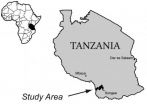(Press-News.org) PHILADELPHIA – New research from the Perelman School of Medicine at the University of Pennsylvania and the Philadelphia VA Medical Center indicates that the implementation of protected sleep periods for residents who are assigned to overnight shifts in a hospital represent a viable tool in preventing fatigue and alleviating the physiological and behavioral effects of sleep deprivation among these doctors in training. The new results will be published in the December 5th edition of the Journal of the American Medical Association (JAMA).
"Within the last two years, we've seen sweeping changes in guidelines regulating the number of hours that first-year residents can work as they continue their medical training," said lead study author Kevin Volpp, MD, PhD, staff physician at the Philadelphia VA Medical Center and professor of Medicine and Health Care Management, Perelman School of Medicine and the Wharton School, University of Pennsylvania. "While these restrictions were put into place to help battle fatigue and improve patient care, the one-size-fits-all model has left many wondering whether or not other viable options could be implemented too. Based on a report from the Institute of Medicine in 2009 recommending protected sleep periods when residents work duty periods of up to 30 hours, we wanted to determine whether offering these protected sleep periods, akin to a power nap, would offer a practical alternative."
In July 2011, medical residency programs across the country revamped physician-trainees' schedules to comply with new work-hour restrictions imposed by the Accreditation Council on Graduate Medical Education (ACMGE). Under these regulations, first-year residents (also referred to as interns) are no longer permitted to work more than 16 hours at a time. The changes were intended to enhance supervision of trainees by experienced physicians, improve transitions in patient care from one provider to another, and alleviate concerns about residents' fatigue during continuous periods of duty – which previously lasted up to 30 hours.
In the current study, two randomized controlled trials were conducted simultaneously between July 2009 and June 2010, before the implementation of the new ACGME rules. The research team recruited 106 interns from the Hospital of the University of Pennsylvania and the Philadelphia VA Medical Center to one of two groups – either a standard intern shift of 30 hours overnight or a protected sleep period shift – during twelve 4-week blocks. The protected sleep periods in the hospital were honored between 12:30 and 5:30 a.m., and the participants had to handover their work cell phone to another resident to ensure appropriate coverage and patient care. Each participant was also asked to wear a wrist Actiwatch (a wristwatch-like device that monitors rest/activity cycles and light) and complete a sleep diary during the study.
Adherence to the intervention was remarkably high, with about 98 percent of interns signing out their cell phones to covering residents as designed. During the study, the participants in the protected sleep group increased the amount of time they slept while on call by 50 percent (from two to three hours on average). They also decreased the overall amount of time they were awake, reducing periods of no sleep while on extended duty, and the study participants reported far less sleep disturbances, helping to improve overall sleep quality. As gauged by a sleepiness scale, participants felt less fatigued after on-call nights in the protected sleep group.
The research team was encouraged by the results for a number of reasons, including the participants' willingness to modify their traditional shift and embrace the importance and impact of sleep. By accepting sleep at strategically assigned times, the residents were also able to maintain consistent contact with their patients and stay with them during their first critical 24 hours in the hospital, while also improving alertness. The team also notes that decreasing the overall amount of time that participants were awake is particularly important, as continuous periods of wakefulness are a major predictor of work-related performance errors.
"Decades of research from the sleep medicine community have shown that prolonged periods of wakefulness and no sleep impact the performance and health of professionals who must be awake when much of the rest of the world sleeps, such as pilots, first responders, and medical professionals," said senior study author David F. Dinges, PhD, professor of Psychology in Psychiatry and chief, Division of Sleep and Chronobiology in the Department of Psychiatry at Penn. "This study provides the first evidence that contrary to long held cultural beliefs within the medical community, young doctors are embracing the importance of sleep and looking for ways to increase their own performance to better treat their patients."
As the current study was not powered to look directly at patient outcomes, the study authors say that additional comparative effectiveness research into this area will be important when considering widespread adoption of protected sleep periods in health care settings.
Other study authors from Penn include: Judy A. Shea, PhD; Dylan S. Small, PhD; Mathias Basner, MD, PhD, MSc; Jingsan Zhu, MBA; Laurie Norton, MBA; Adrian Ecker; Cristina Novak, BA; Lisa M. Bellini, MD; and C. Jessica Dine, MD.
Drs. Volpp and Dr. Shea are core faculty members at the Center for Health Equity Research and Promotion (CHERP) at the Philadelphia VA Medical Center.
Primary funding for the study was provided by the Veterans Affairs Health Services Research and Development Service (08-429) to Dr. Volpp, and an additional grant from the National Institute of Nursing Research (NR004281) to Dr. Dinges.
###
Penn Medicine is one of the world's leading academic medical centers, dedicated to the related missions of medical education, biomedical research, and excellence in patient care. Penn Medicine consists of the Raymond and Ruth Perelman School of Medicine at the University of Pennsylvania (founded in 1765 as the nation's first medical school) and the University of Pennsylvania Health System, which together form a $4.3 billion enterprise.
The Perelman School of Medicine is currently ranked #2 in U.S. News & World Report's survey of research-oriented medical schools. The School is consistently among the nation's top recipients of funding from the National Institutes of Health, with $479.3 million awarded in the 2011 fiscal year.
The University of Pennsylvania Health System's patient care facilities include: The Hospital of the University of Pennsylvania -- recognized as one of the nation's top "Honor Roll" hospitals by U.S. News & World Report; Penn Presbyterian Medical Center; and Pennsylvania Hospital — the nation's first hospital, founded in 1751. Penn Medicine also includes additional patient care facilities and services throughout the Philadelphia region.
Penn Medicine is committed to improving lives and health through a variety of community-based programs and activities. In fiscal year 2011, Penn Medicine provided $854 million to benefit our community.
Protected 'power naps' prove helpful for doctors in training to fight fatigue
New research provides possible alternative to mandated shorter duty hours for residents
2012-12-05
ELSE PRESS RELEASES FROM THIS DATE:
New evidence on how compound found in red wine can help prevent cancer
2012-12-05
University of Leicester scientists will present groundbreaking new evidence about how a chemical found in red wine can help prevent cancer on Wednesday, December 5.
Experts from around the world are set to attend Resveratrol 2012, a major conference at the University which will assess the latest advances in the study of resveratrol – a compound found in the skins of red grapes.
The conference will feature new findings based on the last two years of research, which show how the chemical can help prevent cancer, heart disease and diabetes.
The event follows the first ...
Scientists find oldest dinosaur – or closest relative yet
2012-12-05
Researchers have discovered what may be the earliest dinosaur, a creature the size of a Labrador retriever, but with a five foot-long tail, that walked the Earth about 10 million years before more familiar dinosaurs like the small, swift-footed Eoraptor and Herrerasaurus.
The findings mean that the dinosaur lineage appeared 10 million to 15 million years earlier than fossils previously showed, originating in the Middle Triassic rather than in the Late Triassic period.
"If the newly named Nyasasaurus parringtoni is not the earliest dinosaur, then it is the closest relative ...
Hushed hoarders and prying pilferers
2012-12-05
VIDEO:
Eurasian jays change strategies to prevent others from stealing food and to improve their chances of absconding with other birds’ caches.
Click here for more information.
In order to prevent other birds from stealing the food they are storing for later, Eurasian jays, a type of corvid, minimizes any auditory hints a potential pilferer may use to steal their cache (food that is buried for later use). The new research was published today, 05 December, in the journal ...
Housing sales data used to estimate value of urban natural resources
2012-12-05
ST. PAUL, Minn., December 4, 2012 – Trees, water and lawn clearly matter to urban dwellers. For city planners balancing green space with other demands, the question has been just how much green space matters to residents.
Working with lead author Heather Sander of the University of Iowa, economist Robert Haight of the U.S. Forest Service's Northern Research Station estimated how much home buyers are willing to pay for more scenic vistas, better access to outdoor recreation, and greater neighborhood tree cover. Their study, "Estimating the economic value of cultural ecosystem ...
Telestroke cost effective for hospitals
2012-12-05
PHOENIX — Researchers have found that using telemedicine to deliver stroke care, also known as telestroke, appears to be cost-effective for rural hospitals that do not have an around-the-clock neurologist, or stroke expert, on staff. The research, published today in Circulation: Cardiovascular Quality and Outcomes, is intended to help hospital administrators evaluate telestroke.
In telestroke care, the use of a telestroke robot allows a patient with stroke to be examined in real time by a neurology specialist elsewhere who consults via computer with an emergency room ...
California's N2O emissions may be nearly triple current estimates
2012-12-05
Using a new method for estimating greenhouse gases that combines atmospheric measurements with model predictions, Lawrence Berkeley National Laboratory (Berkeley Lab) researchers have found that the level of nitrous oxide, a potent greenhouse gas, in California may be 2.5 to 3 times greater than the current inventory.
At that level, total N2O emissions—which are believed to come primarily from nitrogen fertilizers used in agricultural production—would account for about 8 percent of California's total greenhouse gas emissions. The findings were recently published in a ...
Rewriting personal history by inventing racist roads not taken
2012-12-05
Evanston, Ill. (December 4, 2012) – In 2008, research showed that expressing support for Barack Obama increased people's comfort in subsequently saying or doing things that might be considered racist. Researchers argued that endorsing a black political figure made people feel as if they had "non-racist credentials" that reduced their concern about subsequently seeming prejudiced. Now this same research group has identified a mental trick that people play to convince themselves that they have these same non-racist credentials: convincing themselves that they were presented ...
Evolution: Social exclusion leads to cooperation
2012-12-05
The study, by IIASA Evolution and Ecology Program postdoctoral fellow Tatsuya Sasaki, provides a simple new model that ties punishment by social exclusion to the benefits for the punisher. It may help explain how social exclusion arose in evolution, and how it promotes cooperation among groups.
"Punishment is a common tool to promote cooperation in the real world," says Sasaki. "And social exclusion is a common way to do it." From reef fish to chimpanzees, there are many examples of animals that promote cooperation by excluding free riders. Humans, too, use social exclusion ...
Predictors of postpartum pelvic joint pain identified among working women
2012-12-05
Philadelphia, PA, December 4, 2012 – A new study of working women has identified factors during pregnancy and postpartum that can predict pain in the joints that comprise the pelvic girdle. While 90 percent of working women in the Netherlands return to work after the birth of their first child, health issues during the postpartum period often require sick leave. Chief among these health issues is pelvic girdle pain (PGP).
"It is important to identify predictors for postpartum PGP, because physicians, obstetricians, midwives, and employers could use them to identify women ...
Synchrotron gives insight into green energy enzymes
2012-12-05
UC Davis chemists have been using a Japanese synchrotron to get a detailed look at enzymes that could help power the green economy. The work was published online Nov. 8 by the journal Angewandte Chemie and is featured on the cover of the Nov. 26 issue.
One option for powering clean, environment friendly vehicles is to run them on hydrogen fuel rather than carbon-based fuels. Cheap catalysts to prepare hydrogen gas (H2) are key to this future "hydrogen economy."
Current man-made catalysts are based on the rare and precious metal platinum. But living cells contain enzymes ...
LAST 30 PRESS RELEASES:
Injectable breast ‘implant’ offers alternative to traditional surgeries
Neuroscientists devise formulas to measure multilingualism
New prostate cancer trial seeks to reduce toxicity without sacrificing efficacy
Geometry shapes life
A CRISPR screen reveals many previously unrecognized genes required for brain development and a new neurodevelopmental disorder
Hot flush treatment has anti-breast cancer activity, study finds
Securing AI systems against growing cybersecurity threats
Longest observation of an active solar region
Why nail-biting, procrastination and other self-sabotaging behaviors are rooted in survival instincts
Regional variations in mechanical properties of porcine leptomeninges
Artificial empathy in therapy and healthcare: advancements in interpersonal interaction technologies
Why some brains switch gears more efficiently than others
UVA’s Jundong Li wins ICDM’S 2025 Tao Li Award for data mining, machine learning
UVA’s low-power, high-performance computer power player Mircea Stan earns National Academy of Inventors fellowship
Not playing by the rules: USU researcher explores filamentous algae dynamics in rivers
Do our body clocks influence our risk of dementia?
Anthropologists offer new evidence of bipedalism in long-debated fossil discovery
Safer receipt paper from wood
Dosage-sensitive genes suggest no whole-genome duplications in ancestral angiosperm
First ancient human herpesvirus genomes document their deep history with humans
Why Some Bacteria Survive Antibiotics and How to Stop Them - New study reveals that bacteria can survive antibiotic treatment through two fundamentally different “shutdown modes”
UCLA study links scar healing to dangerous placenta condition
CHANGE-seq-BE finds off-target changes in the genome from base editors
The Journal of Nuclear Medicine Ahead-of-Print Tip Sheet: January 2, 2026
Delayed or absent first dose of measles, mumps, and rubella vaccination
Trends in US preterm birth rates by household income and race and ethnicity
Study identifies potential biomarker linked to progression and brain inflammation in multiple sclerosis
Many mothers in Norway do not show up for postnatal check-ups
Researchers want to find out why quick clay is so unstable
Superradiant spins show teamwork at the quantum scale
[Press-News.org] Protected 'power naps' prove helpful for doctors in training to fight fatigueNew research provides possible alternative to mandated shorter duty hours for residents


